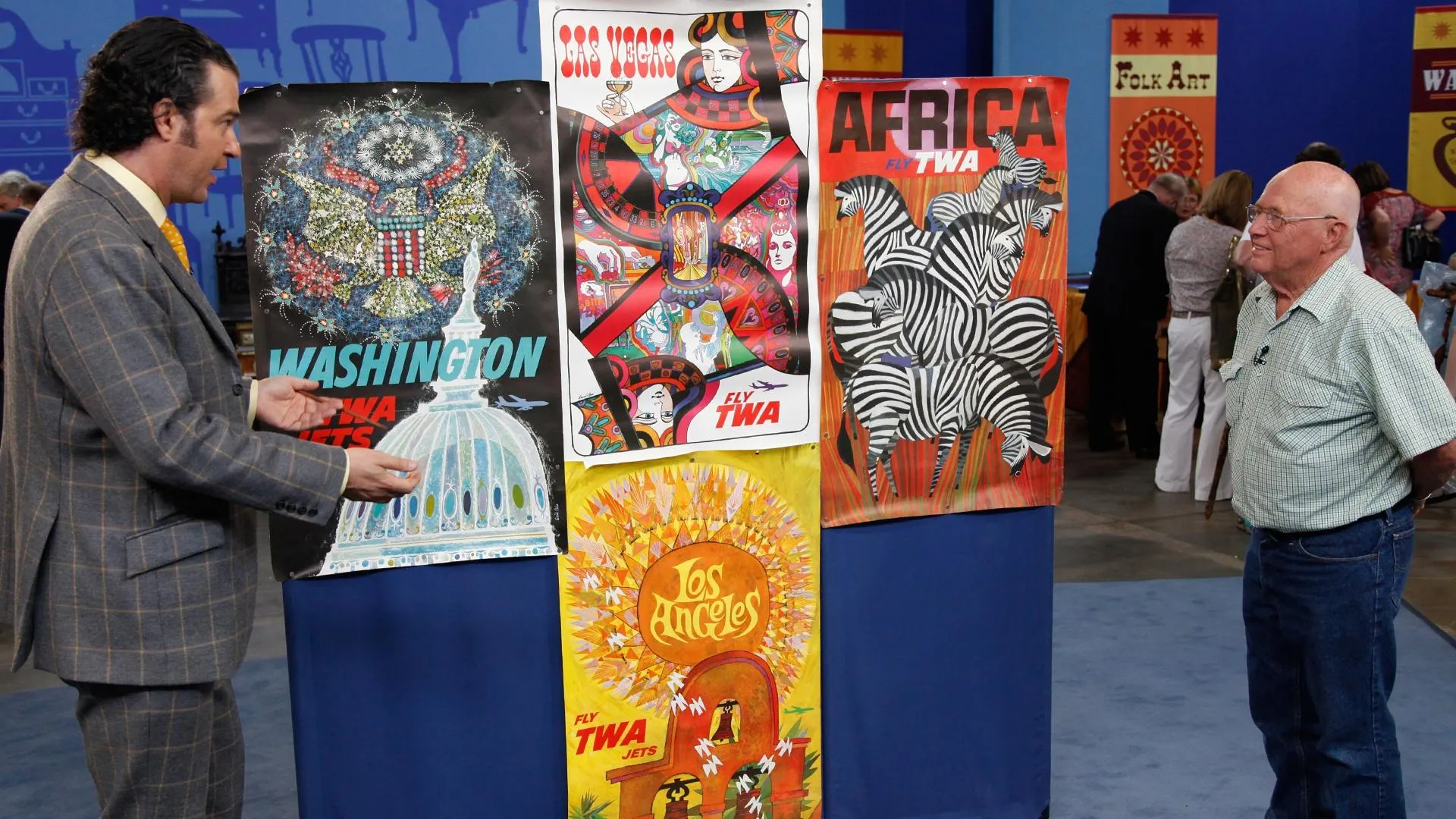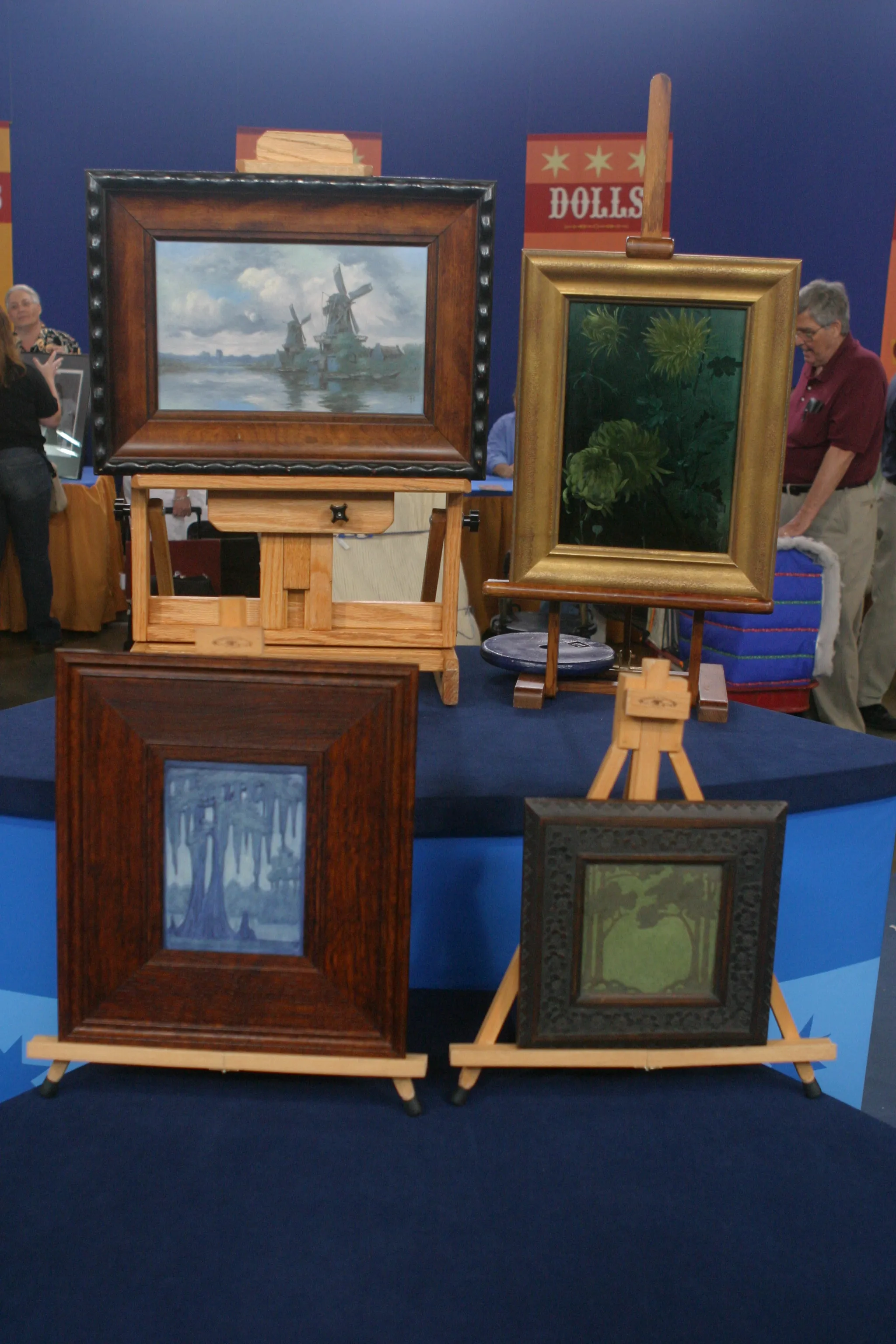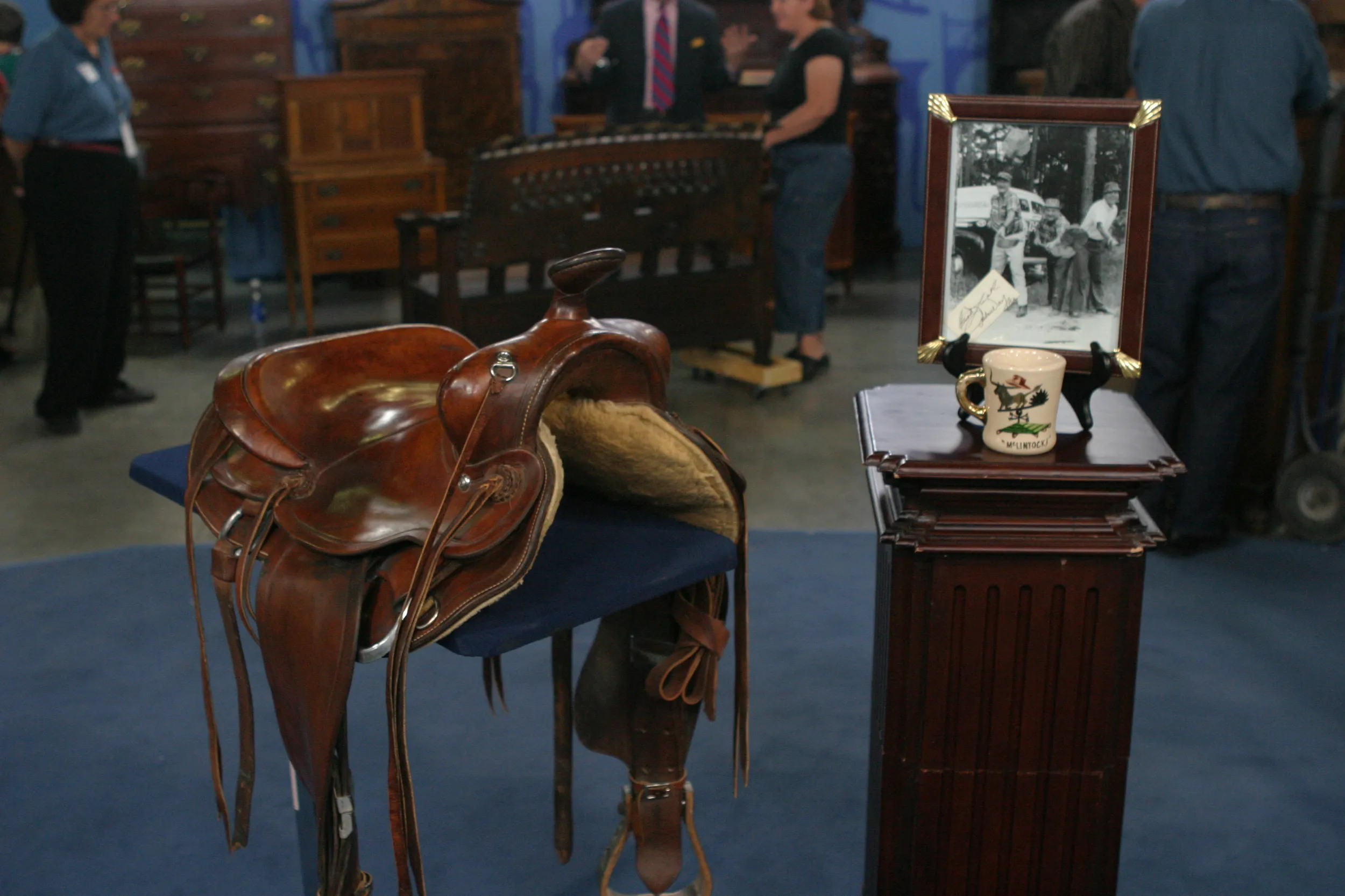GUEST: Well, this group of posters I acquired from my father-in-law, Jim. And Jim was an employee of TWA. And he actually hauled jet engines from New York to Kansas City overhaul area, and from Los Angeles to Kansas City overhaul area. When they got through with this particular ad campaign, they gave him a whole stack of posters of all the destinations that they flew, and these ones that we see here are some that I have.
APPRAISER: So all told, how many do you think he gave you?
GUEST: There was a six-inch stack of them.
APPRAISER: So I mean, you know, six inches of posters is probably about 200, 300 different sheets of paper, maybe a little bit more than that.
GUEST: Yeah, yeah. I used them throughout the years for various things. I use them for patterns for some poster work I did. Tape them together, make a big pattern. I used them for overspray when I'd spray-paint projects we had in 4-H and things like that. I just didn't place the value on them that I should have at that time because we all thought there'd always be a TWA, and Montgomery Ward's and a Woolworth's, didn't we?
APPRAISER: What do you know about these images? Aside from the fact that you got them from family. What else can you tell me about them?
GUEST: I know that there's signatures on them, but I don't know what the signatures...
APPRAISER: In fact, all of these have two things in common. They're all advertising TWA.
GUEST: Right.
APPRAISER: And they're all by the same artist, David Klein. David Klein was one of the most prolific commercial poster designers of the 20th century, in large part because of the great amount of work he did for TWA. Some people refer to these as the emblematic images of the early jet age. They're also important because they were so early on in the history of jet travel in this country. Now, do you have any idea when they're from?
GUEST: 1970s. It would have been in the '70s, late '69.
APPRAISER: To my reckoning, I think it would have been more in the 1960s.
GUEST: Okay.
APPRAISER: TWA began running jet planes sometime in the late 1950s. And you can see on several of these posters, you actually have the silhouette of a jet plane, which distinguishes it from their earlier service, which would have been on the Constellations. Any idea as to the value of this scrap paper?
GUEST: Well, no, I have no monetary value, no.
APPRAISER: From a market point of view, the most valuable one is the one that's closest to you. The graphics are really extraordinary the way the straight lines and the circular lines interact. At auction, I would estimate that piece between $800 and $1,200.
GUEST: It's just unbelievable.
APPRAISER: Just for that one. Now, the two in the middle are great destinations. Who doesn't like Las Vegas? Who doesn't want to live in Los Angeles? But value-wise, they're a little bit lower. Each one of these two--the Los Angeles and the Las Vegas--I would estimate them each between $400 and $600.
GUEST: Unbelievable.
APPRAISER: And then we come to the Washington one. And David Klein did several posters that featured fireworks. He did a Paris with the Eiffel Tower, he did one for New York with the Statue of Liberty, and this one for Washington. I think that at auction, the Washington poster would fetch between $700 and $1,000. Now let me just do some quick math for you. These four posters alone--never mind the other ones you brought, never mind the ones that you didn't bring, and certainly never minding the ones that you've used as scrap paper over the years--these four posters alone, at auction, I feel would fetch between $2,300 and $3,400.
GUEST: Just unbelievable. They did make great material for overspray.









